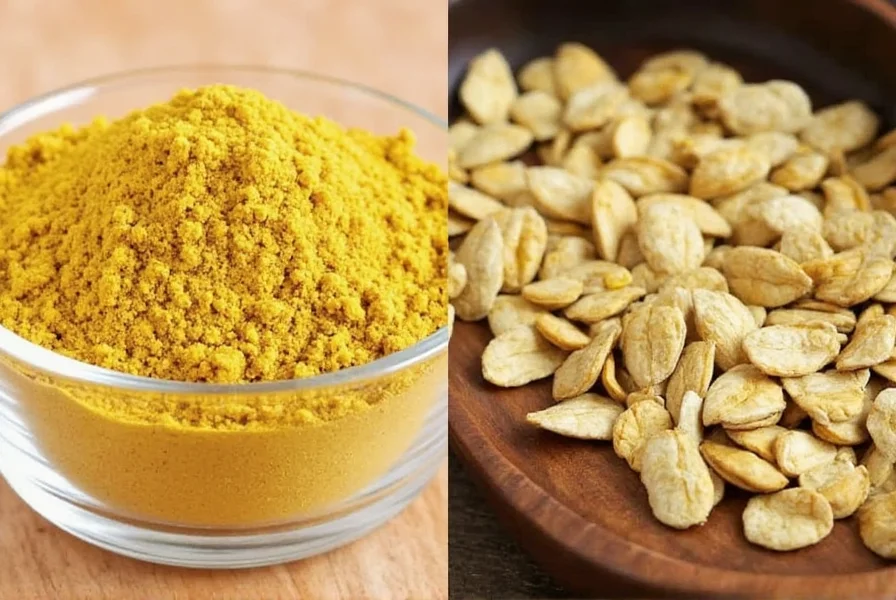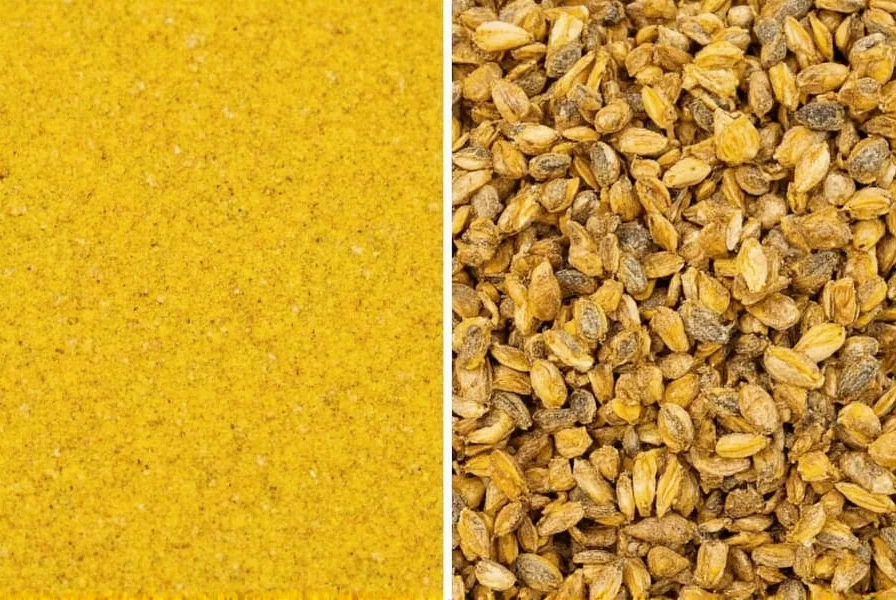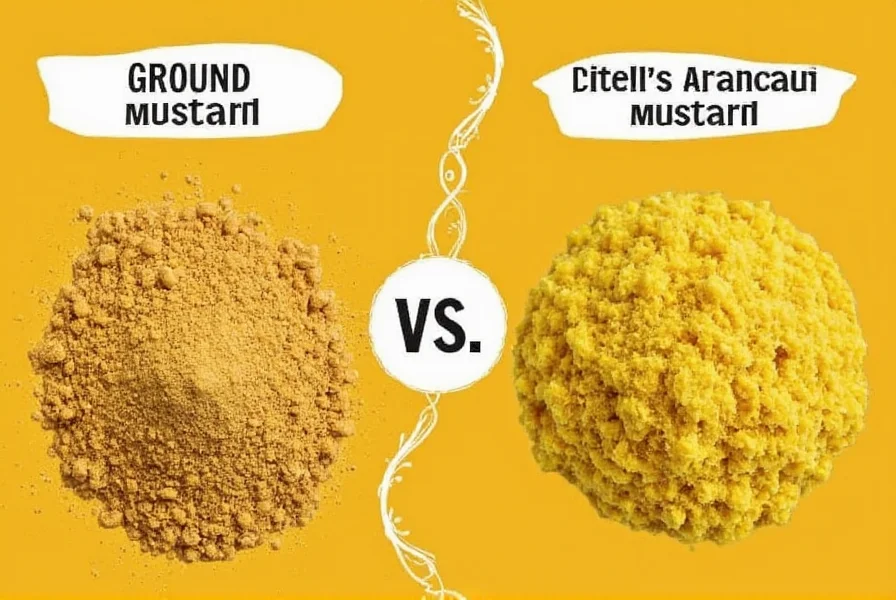When you encounter both terms in recipes or grocery stores, it's natural to wonder if there's a distinction. The straightforward answer is no—ground mustard and dried mustard are identical ingredients. This culinary staple appears under multiple names due to historical recipe conventions and regional language preferences rather than any physical difference.
Understanding Mustard Terminology
Mustard products exist in three primary forms: whole seeds, ground powder, and prepared condiment. The confusion between “ground” and “dried” specifically relates to the powdered stage before liquid activation.
Food historians note that “dried mustard” appeared more frequently in mid-20th century American cookbooks, while contemporary packaging and recipes increasingly use “ground mustard.” Both labels describe mustard seeds that have undergone dehydration and grinding processes to create a shelf-stable powder.
| Mustard Form | Moisture Content | Shelf Life | Common Names |
|---|---|---|---|
| Whole Mustard Seeds | 8-10% | 2-3 years | Mustard seeds, whole mustard |
| Ground/Dried Mustard | 5-7% | 1-2 years | Mustard powder, dry mustard, ground mustard |
| Prepared Mustard | 80-85% | 12-18 months | Yellow mustard, Dijon, whole grain mustard |
How Ground Mustard Works in Cooking
Unlike prepared mustard, ground mustard requires activation through liquid to develop its characteristic pungency. When mixed with water, vinegar, or other liquids, enzymes in the powder react to create the familiar mustard flavor. This chemical process explains why recipes often call for “blooming” ground mustard in liquid before adding to dishes.
Chefs appreciate ground mustard's versatility in dry rubs, spice blends, and marinades where prepared mustard would add unwanted moisture. The powder integrates seamlessly into dry ingredients for baked goods like pretzels or cheese straws, providing flavor without altering texture.
Substituting Ground Mustard in Recipes
Understanding the ground mustard to prepared mustard conversion proves valuable when adapting recipes. As a general rule:
- 1 teaspoon ground mustard = 1 tablespoon prepared mustard
- When substituting, reduce other liquids by 2 teaspoons per tablespoon of prepared mustard replaced
- For best results, let reconstituted ground mustard sit for 10-15 minutes before using
Remember that prepared mustard contains vinegar and other ingredients that affect both flavor and acidity. While substitution works in many applications, it may alter the final product's texture and tanginess. Recipes specifically designed for ground mustard often rely on its unique chemical properties during cooking.
Storage and Shelf Life Considerations
Proper storage maintains ground mustard's potency. Keep the powder in an airtight container away from light and heat. Under ideal conditions, it retains full flavor for 12-18 months. Exposure to moisture causes clumping and accelerates flavor degradation.
Test older ground mustard by mixing a small amount with warm water. If the mixture fails to develop strong aroma within 5 minutes, the powder has lost its enzymatic activity and should be replaced. Unlike prepared mustard, ground mustard doesn't spoil but gradually loses its characteristic pungency.

Common Culinary Applications
Cooks use ground mustard across diverse applications where liquid content matters:
- Dry rubs for meats and vegetables
- Spice blends for soups and stews
- Baked goods requiring savory notes
- Homemade cheese spreads
- Marinades where oil separation is undesirable
The powder's concentrated flavor makes it valuable in recipes where prepared mustard would dilute other ingredients. Its ability to distribute evenly through dry mixtures gives it advantages in certain culinary applications.

Addressing Common Misconceptions
Several myths persist about ground mustard:
- Misconception: Dried mustard contains additional ingredients
Fact: Pure ground mustard contains only mustard seeds - Misconception: Different colors indicate different products
Fact: Yellow powder comes from yellow mustard seeds; brown varieties use darker seeds - Misconception: Prepared mustard can directly replace ground mustard cup for cup
Fact: Liquid content requires recipe adjustments when substituting
Understanding these distinctions helps cooks make informed decisions when following recipes or experimenting with flavors. The interchangeable nature of “ground” and “dried” terminology simplifies ingredient sourcing once the confusion is clarified.
Can I use ground mustard instead of prepared mustard in salad dressings?
Yes, but with adjustments. Use 1 teaspoon ground mustard mixed with 2 teaspoons vinegar or lemon juice to replace 1 tablespoon prepared mustard. Let the mixture sit for 10 minutes to develop flavor before adding other dressing ingredients. You'll need to adjust oil content slightly since you're adding less liquid overall.
Why do some recipes specify 'dry mustard' while others say 'ground mustard'?
This reflects historical recipe writing conventions rather than ingredient differences. Older American cookbooks frequently used 'dry mustard' while contemporary recipes and packaging prefer 'ground mustard.' Both terms describe the same product - dehydrated mustard seeds ground to powder form. Regional preferences also influence the terminology used in different areas.
Does ground mustard have the same health benefits as prepared mustard?
Ground mustard retains the same core nutritional compounds as prepared mustard since it's simply the dehydrated form. Both contain glucosinolates and selenium found in mustard seeds. However, prepared mustard often includes vinegar and other ingredients that may affect absorption. The primary difference is moisture content - the active compounds become available when ground mustard is reconstituted with liquid.
How can I tell if my ground mustard has gone bad?
Ground mustard doesn't spoil but loses potency over time. Check by mixing 1/4 teaspoon with 1/2 teaspoon warm water. Fresh powder will develop a strong aroma within 3-5 minutes. If little to no scent develops, the mustard has lost its enzymatic activity. Properly stored in an airtight container away from light, ground mustard maintains quality for 12-18 months.
Can I make my own ground mustard from whole seeds?
Absolutely. Use a spice grinder or mortar and pestle to process dry mustard seeds into powder. For best results, toast seeds lightly first to enhance flavor development. Use a 1:1 ratio when substituting homemade for commercial ground mustard. Freshly ground mustard may have slightly stronger flavor, so you might need to adjust quantities in recipes initially.
Practical Takeaways for Home Cooks
Understanding that ground mustard and dried mustard are identical products simplifies your cooking experience. When encountering either term in recipes, you can confidently use the same ingredient. Remember that this powder requires liquid activation to develop its signature flavor, making it functionally different from prepared mustard despite the naming confusion.
Keep a container of ground mustard in your spice cabinet for recipes calling for this versatile ingredient. Its long shelf life and concentrated flavor make it valuable for adding depth to dishes without introducing additional moisture. Whether your recipe says “ground mustard,” “dry mustard,” or “mustard powder,” you're working with the same essential ingredient that has seasoned dishes for centuries.











 浙公网安备
33010002000092号
浙公网安备
33010002000092号 浙B2-20120091-4
浙B2-20120091-4